What is yoga?
The reality is yoga transform your body, Yes it is fact. Yoga is a holistic practice originating from ancient India that combines physical postures, breathing exercises, meditation, and philosophical principles to promote overall well-being. It focuses on cultivating harmony between the mind, body, and spirit, emphasizing flexibility, strength, balance, and inner peace.
Through regular practice, individuals can experience a wide range of benefits, including improved physical fitness, reduced stress and anxiety, enhanced mental clarity, and a greater sense of connection with oneself and others.

Brief History of Yoga
The history of yoga dates back thousands of years to ancient India, where it originated as a spiritual and philosophical practice. The word “yoga” is derived from the Sanskrit word “yuj,” which means to yoke or unite, symbolizing the union of the individual consciousness with the universal consciousness.
Yoga’s roots can be traced to the ancient texts known as the Vedas, particularly the Rigveda, which contains hymns that mention the practice of meditation and asceticism. Over time, yoga evolved and diversified, with different schools of thought emerging, each emphasizing various aspects of the practice.
One of the earliest systematic presentations of yoga is found in the Yoga Sutras of Patanjali, written around 400 CE. Patanjali outlined the eight limbs of yoga, which include ethical principles (yamas and niyamas), physical postures (asanas), breath control (pranayama), sense withdrawal (pratyahara), concentration (dharana), meditation (dhyana), and ultimately, enlightenment (samadhi).
Throughout history, yoga continued to evolve, incorporating elements of Hinduism, Buddhism, Jainism, and other spiritual traditions. It was transmitted orally from teacher to student and eventually documented in texts such as the Hatha Yoga Pradipika and the Bhagavad Gita.
In the late 19th and early 20th centuries, yoga gained attention in the West as part of the broader interest in Eastern philosophy and spirituality. Pioneers like Swami Vivekananda, Paramahansa Yogananda, and Swami Sivananda played significant roles in popularizing yoga outside of India.
In the modern era, yoga has become a global phenomenon, with millions of people practicing it for its physical, mental, and spiritual benefits. Various styles of yoga have emerged, catering to different preferences and fitness levels, but all sharing the common goal of promoting holistic well-being and inner harmony.

The Importance of Yoga
Physical benefits.
Yoga offers a plethora of physical benefits that contribute to overall health and well-being. Here are some of the key physical benefits of practicing yoga:
Improved Flexibility:
Yoga poses, or asanas, gently stretch and lengthen muscles, tendons, and ligaments, gradually increasing flexibility and range of motion in the body. Over time, this enhanced flexibility can alleviate stiffness and tension, improving mobility and reducing the risk of injury.
Increased Strength:
Many yoga poses require engaging and holding various muscle groups, which helps build strength, particularly in the core, arms, legs, and back. By regularly practicing yoga, individuals can develop lean muscle mass, improve muscular endurance, and support better posture and alignment.
Enhanced Balance and Stability:
Balancing poses in yoga challenge proprioception and coordination, improving balance and stability both physically and mentally. Strengthening stabilizing muscles and honing balance skills can prevent falls and enhance overall physical performance.
Better Posture:
Yoga promotes awareness of body alignment and encourages proper posture through the practice of asanas and mindful movement. Strengthening the muscles that support the spine and practicing alignment-focused poses can alleviate common postural issues and reduce discomfort.
Pain Relief:
Yoga has been shown to alleviate various types of pain, including chronic back pain, arthritis, and migraines. Through gentle stretching, strengthening, and relaxation techniques, yoga can release tension, improve circulation, and promote the body’s natural healing processes.
Improved Respiratory Function:
Yogic breathing techniques, or pranayama, focus on deep, mindful breathing, which can enhance lung capacity, increase oxygen intake, and improve respiratory efficiency. Regular pranayama practice can reduce respiratory rate, calm the nervous system, and enhance overall respiratory health.
Cardiovascular Health:
Certain dynamic yoga styles, such as Vinyasa or Power Yoga, elevate heart rate and provide a cardiovascular workout that strengthens the heart and improves circulation. By combining physical movement with conscious breathing, yoga can support heart health and lower the risk of cardiovascular diseases.
Weight Management:
While yoga alone may not result in significant weight loss, it can complement a healthy lifestyle by increasing calorie expenditure, promoting mindfulness around eating habits, and reducing stress-related eating. Regular practice can contribute to weight management and overall fitness.
Incorporating yoga into your fitness routine can offer a multitude of physical benefits that promote strength, flexibility, balance, and overall vitality, supporting a healthier and more active lifestyle.
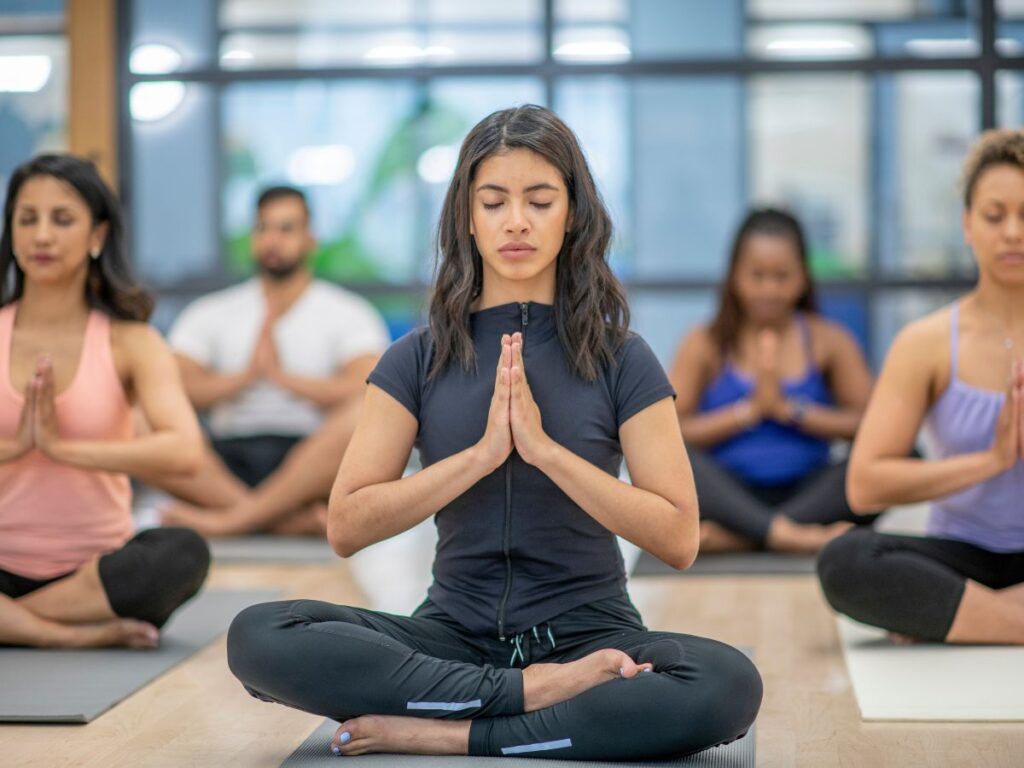
Mental benefits
In addition to its physical benefits, yoga is renowned for its profound positive effects on mental well-being. Here are some of the key mental benefits of practicing yoga:
Stress Reduction:
One of the most well-documented benefits of yoga is its ability to reduce stress levels. Through a combination of physical movement, breath awareness, and mindfulness practices, yoga helps activate the body’s relaxation response, calming the nervous system and lowering stress hormones like cortisol.
Anxiety Relief:
Yoga provides a sanctuary for individuals to tune into the present moment, letting go of worries about the future or regrets about the past. Mindfulness techniques cultivated through yoga practice can help manage anxiety symptoms by promoting acceptance, resilience, and a sense of inner peace.
Mood Enhancement:
Regular yoga practice has been shown to elevate mood and improve overall emotional well-being. The combination of physical activity, deep breathing, and meditation fosters the release of endorphins, serotonin, and other neurotransmitters associated with happiness and contentment.
Increased Mental Clarity:
The focused attention required in yoga poses and meditation exercises enhances concentration and mental clarity. Practitioners often report feeling more mentally alert, present, and able to navigate daily challenges with greater ease and efficiency.
Emotional Regulation:
Yoga teaches individuals to observe their thoughts and emotions without judgment, cultivating emotional intelligence and resilience. By developing greater awareness and acceptance of their internal experiences, practitioners can respond to stressors and triggers more skillfully, leading to improved emotional regulation.
Better Sleep:
Yoga can promote better sleep quality by reducing insomnia symptoms, calming the mind, and relaxing the body. Evening yoga practices, such as gentle stretches and restorative poses, signal to the nervous system that it’s time to unwind, facilitating a smooth transition into restful sleep.
Enhanced Self-Confidence:
As individuals progress in their yoga practice and witness improvements in strength, flexibility, and mindfulness, they often experience a boost in self-confidence and self-esteem. Yoga encourages self-acceptance and self-compassion, fostering a positive self-image and inner resilience.
Coping with Trauma:
Yoga has been increasingly recognized as a therapeutic tool for individuals healing from trauma or post-traumatic stress disorder (PTSD). Trauma-informed yoga practices emphasize safety, empowerment, and gentle movement, providing a supportive environment for processing emotions and building resilience.
By incorporating yoga into their lifestyle, individuals can experience a profound transformation in their mental well-being, cultivating resilience, inner peace, and emotional balance amidst life’s challenges.

From Om to Oh Yeah: Transforming Your Body with Yoga
Understanding the transformation process.
Understanding the transformation process in yoga involves recognizing that it goes beyond physical changes and encompasses holistic growth on mental, emotional, and spiritual levels. Here’s a breakdown of the transformation process in yoga:
Physical Transformation:
While yoga offers numerous physical benefits, such as increased flexibility, strength, and balance, the physical transformation is just one aspect of the journey. As individuals progress in their practice, they may notice improvements in posture, muscle tone, and overall vitality, leading to a healthier and more resilient body.
Mental Clarity and Focus:
Through mindful movement, breath awareness, and meditation, yoga cultivates mental clarity and focus. Practitioners learn to quiet the chatter of the mind, observe their thoughts without attachment, and direct their attention to the present moment. This heightened awareness enhances cognitive function, concentration, and decision-making abilities.
Emotional Regulation:
Yoga provides a safe space for exploring and processing emotions. By practicing self-compassion, acceptance, and non-judgment, individuals develop greater emotional resilience and regulation skills. They learn to respond to challenging situations with equanimity, compassion, and empathy, fostering healthier relationships and a deeper sense of emotional well-being.
Spiritual Growth:
Yoga is rooted in spiritual principles that emphasize interconnectedness, self-awareness, and transcendence. As individuals delve deeper into their practice, they may experience a deepening of their spiritual connection, a sense of inner peace, and a profound shift in perspective. Yoga philosophy encourages exploration of existential questions and alignment with one’s higher purpose, leading to personal growth and spiritual awakening.
Lifestyle Changes:
The transformation process in yoga often extends beyond the mat and into everyday life. Practitioners may adopt healthier habits, such as mindful eating, regular exercise, and self-care practices, that support their overall well-being. They may also cultivate greater compassion, gratitude, and mindfulness in their interactions with others, fostering a more harmonious and fulfilling lifestyle.
Self-Discovery and Self-Expression:
Yoga encourages individuals to explore their inner landscape and express themselves authentically. Through movement, breath, and meditation, practitioners connect with their inner wisdom, intuition, and creativity. They learn to listen to their bodies, honor their needs, and embrace their unique strengths and vulnerabilities, fostering self-discovery and personal growth.
Overall, the transformation process in yoga is a multifaceted journey of self-exploration, growth, and empowerment. It involves integrating the physical, mental, emotional, and spiritual dimensions of the self, leading to greater self-awareness, resilience, and fulfillment in all aspects of life.
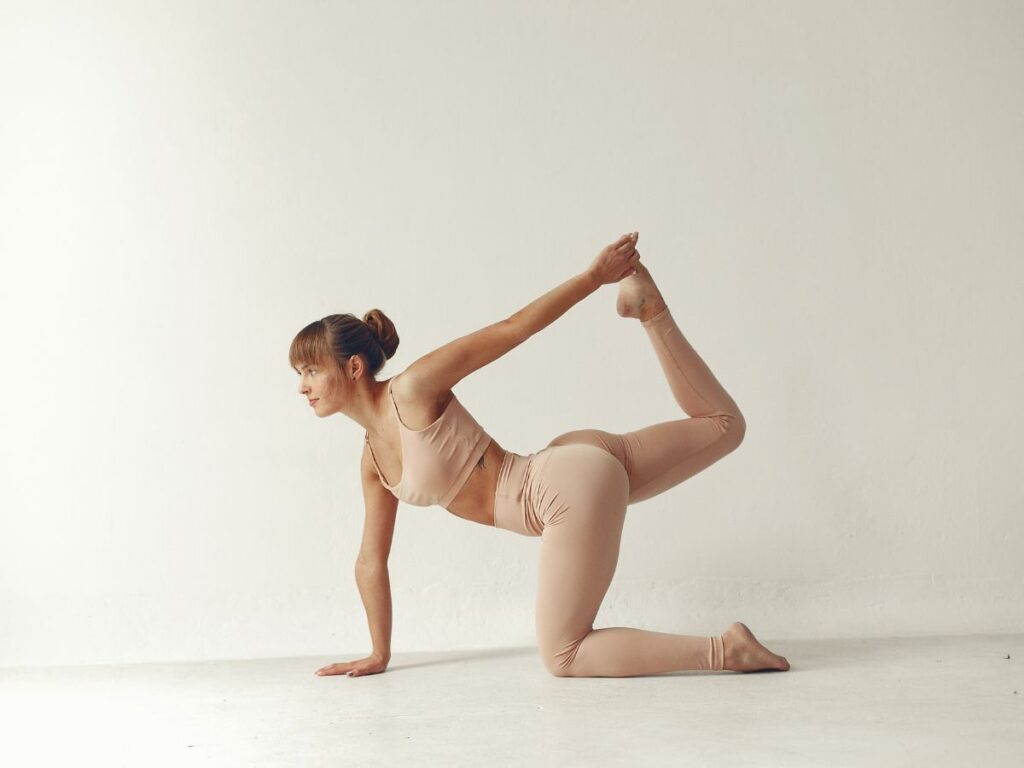
Benefits of incorporating yoga into your fitness routine.
Incorporating yoga into your fitness routine offers a myriad of benefits that complement traditional exercise methods. Here are some of the key advantages:
Improved Flexibility and Range of Motion:
Yoga involves a series of dynamic stretches and poses that target different muscle groups, gradually increasing flexibility and mobility throughout the body. Enhanced flexibility can help prevent injuries, alleviate muscle tension, and improve overall posture.
Enhanced Strength and Muscle Tone:
While yoga may not involve lifting heavy weights, it challenges muscles in unique ways, leading to increased strength and muscle tone. Holding yoga poses requires engaging various muscle groups, particularly the core, arms, legs, and back, resulting in improved muscular endurance and definition.
Better Balance and Stability:
Many yoga poses focus on balance and stability, requiring practitioners to maintain steady alignment and control. By practicing balancing poses regularly, individuals can strengthen stabilizing muscles, improve proprioception, and reduce the risk of falls or injuries, both on and off the mat.
Stress Reduction and Relaxation:
Yoga incorporates breath work, meditation, and mindfulness techniques that promote relaxation and stress relief. By activating the parasympathetic nervous system, yoga triggers the body’s relaxation response, reducing levels of cortisol and promoting feelings of calmness and inner peace.
Improved Posture and Alignment:
Yoga emphasizes proper body alignment and awareness, helping individuals develop better posture and alignment habits. By strengthening the muscles that support the spine and practicing alignment-focused poses, practitioners can alleviate common postural issues, such as rounded shoulders or forward head posture.
Increased Energy and Vitality:
Regular yoga practice boosts circulation, oxygenates the body, and stimulates the flow of energy (prana) throughout the system. As a result, practitioners often report feeling more energized, rejuvenated, and invigorated after a yoga session, making it an excellent way to start or end the day.
Mind-Body Connection:
Yoga fosters a deep connection between the mind and body, promoting greater self-awareness and mindfulness. By tuning into physical sensations, breath patterns, and mental states, practitioners cultivate a heightened sense of presence and embodiment, leading to a more holistic approach to fitness and well-being.

Complementary to Other Forms of Exercise:
Yoga can complement and enhance other forms of exercise, such as weight training, cardio, or sports. It helps prevent overuse injuries, promotes recovery and flexibility, and balances out the intensity of high-impact workouts with gentle, low-impact movements.
Incorporating yoga into your fitness routine offers a holistic approach to health and wellness, providing physical, mental, and emotional benefits that support overall well-being and longevity. Whether practiced on its own or alongside other forms of exercise, yoga offers a versatile and accessible way to stay fit, flexible, and balanced in body and mind.
Key Yoga Moves for Transformation
Sun Salutations (Surya Namaskar):
Sun Salutations are a series of dynamic yoga poses that are traditionally performed as a sequence to warm up the body and build energy. They typically include a combination of forward bends, lunges, and backbends, synchronized with the breath. Sun Salutations are excellent for improving flexibility, strength, and circulation, and they serve as a foundational practice in many yoga styles.
Warrior Poses (Virabhadrasana):
Warrior Poses are a group of standing yoga poses that symbolize strength, courage, and determination. There are three main variations: Warrior I, Warrior II, and Warrior III. Each pose focuses on different aspects of strength, stability, and balance, while also stretching and opening the hips, chest, and shoulders. Warrior Poses help build lower body strength, improve posture, and cultivate mental resilience.
Downward Dog (Adho Mukha Svanasana):
Downward Dog is a fundamental yoga pose that resembles an inverted “V” shape. It involves pressing the hands and feet into the ground while lifting the hips toward the ceiling, creating length in the spine and stretching the entire body from the calves to the shoulders. Downward Dog is a versatile pose that strengthens the arms, shoulders, and core, while also lengthening the hamstrings and relieving tension in the back and neck.
Plank Pose (Phalakasana):
Plank Pose is a core-strengthening yoga pose that involves holding a push-up position with the body in a straight line from head to heels. It targets the muscles of the core, including the abdominals, obliques, and lower back, while also engaging the arms, shoulders, and legs for stability. Plank Pose builds strength, improves posture, and enhances overall physical endurance.
Tree Pose (Vrksasana):
Tree Pose is a balancing yoga pose that requires standing on one leg while the other foot is placed on the inner thigh, calf, or ankle of the standing leg. The hands are typically pressed together at the heart center or extended overhead like branches of a tree. Tree Pose strengthens the muscles of the standing leg, improves balance and concentration, and opens the hips and chest. It also promotes a sense of grounding and stability.
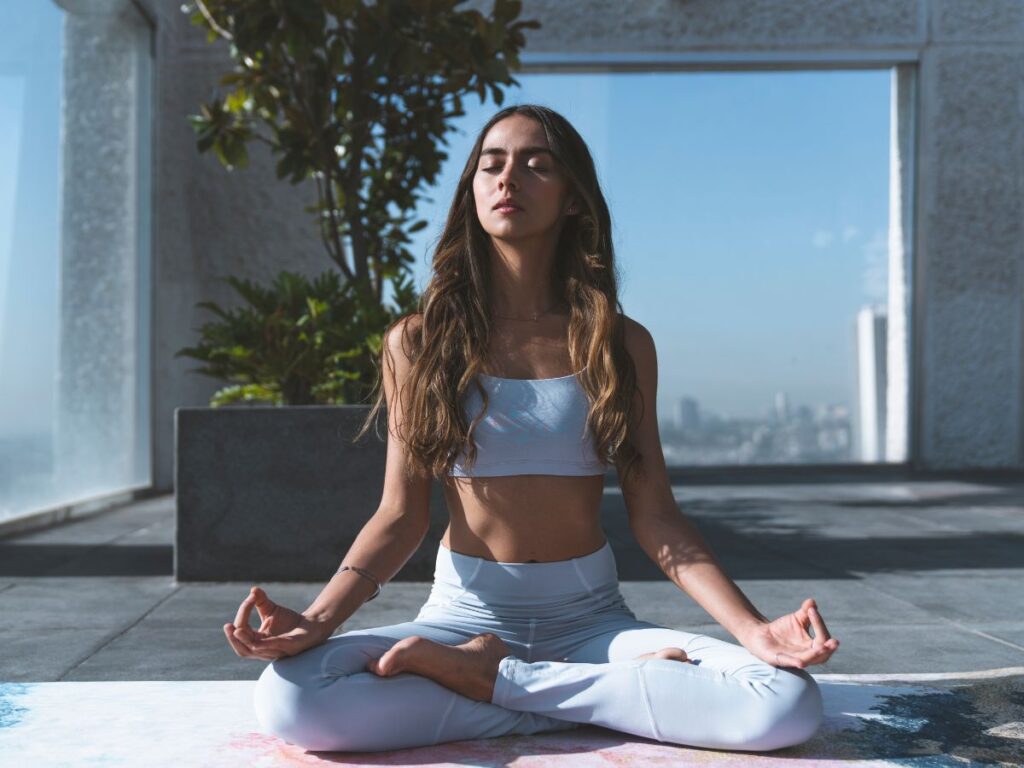
How to Perform Each Yoga Move Correctly
Sun Salutations (Surya Namaskar): Step-by-step guide for beginners:
- Begin standing at the front of your mat with feet hip-width apart, arms by your sides.
- Inhale, raise your arms overhead, and arch back slightly, lengthening the spine, fold forward from the hips, keeping the spine long, and bring hands to the mat beside your feet, lengthen your spine halfway, lifting your chest and gaze forward.
- Exhale, step or jump back into a plank position, keeping the body in a straight line from head to heels.
- Lower down to the mat with control, elbows close to the body, coming into a low push-up position.
- Inhale, press into the hands, lift the chest and gaze upward into upward facing dog.
- Exhale, lift the hips up and back, coming into downward facing dog.
Common mistakes and how to avoid them:
- Arching the lower back excessively: Engage the core and maintain a slight tuck of the tailbone to protect the lower back.
- Rushing through the sequence: Move mindfully and synchronize each movement with your breath.
- Holding the breath: Remember to breathe smoothly and deeply throughout the entire sequence.
Warrior Poses (Virabhadrasana): Step-by-step guide for beginners:
- Begin in a standing position at the top of your mat.
- Step your left foot back, keeping it at a 45-degree angle, and bend your right knee, stacking it directly over your right ankle.
- Extend your arms out to the sides at shoulder height, palms facing down.
- Turn your gaze forward over your right fingertips.
- Hold the pose for several breaths, then switch sides.
Common mistakes and how to avoid them:
- Collapsing the front knee inward: Keep the knee stacked over the ankle to protect the knee joint.
- Leaning too far forward or backward: Maintain an upright posture and engage the core for stability.
- Holding tension in the shoulders: Relax the shoulders away from the ears and soften the facial muscles.
Downward Dog (Adho Mukha Svanasana): Step-by-step guide for beginners:
- Begin on your hands and knees, with your wrists under your shoulders and knees under your hips.
- Spread your fingers wide and press firmly into the palms, tucking the toes under.
- Exhale, lift your hips up and back, straightening your arms and legs, forming an inverted V shape with your body.
- Keep a slight bend in the knees if necessary to maintain length in the spine.
- Press your heels toward the ground while lifting your sitting bones toward the ceiling.
Common mistakes and how to avoid them:
- Rounding the spine: Keep the spine straight and elongated by engaging the core muscles and lifting the tailbone toward the ceiling.
- Dropping the shoulders: Press into the hands and externally rotate the upper arms to keep the shoulders stable and engaged.
- Holding tension in the neck: Relax the neck and gaze toward the thighs or belly button to release tension in the neck and shoulders.
Plank Pose (Phalakasana): Step-by-step guide for beginners:
- Begin in a push-up position with your wrists directly under your shoulders and your body in a straight line from head to heels.
- Engage your core muscles and firm your thighs to support your body weight.
- Keep your neck in line with your spine and gaze slightly forward, avoiding dropping or lifting the head.
- Hold the pose for several breaths, maintaining stability and alignment throughout the body.
Common mistakes and how to avoid them:
- Sagging in the lower back: Lift the lower belly and engage the core muscles to prevent the hips from dropping.
- Allowing the shoulders to collapse: Press firmly into the hands and broaden the shoulder blades to maintain stability in the upper body.
- Holding the breath: Remember to breathe steadily and evenly throughout the pose, avoiding shallow or erratic breathing patterns.
Tree Pose (Vrksasana): Step-by-step guide for beginners:
- Begin standing tall with your feet together and arms by your sides.
- Shift your weight onto your left foot and root down through the sole of the foot.
- Bend your right knee and place the sole of your right foot on the inner left thigh, calf, or ankle, avoiding the knee joint.
- Press the foot into the leg and the leg into the foot, finding stability and balance.
- Bring your hands together at your heart center or extend them overhead, palms facing each other.
- Find a focal point for your gaze, known as a drishti, to help maintain balance.
- Hold the pose for several breaths, then switch sides.
Common mistakes and how to avoid them:
- Placing the foot on the knee: Avoid placing the foot directly on the knee joint to prevent strain or injury. Instead, place it above or below the knee on the inner thigh or calf.
- Leaning too far to one side: Engage the core muscles and find stability in the standing leg to maintain an upright posture.
- Holding tension in the jaw or facial muscles: Relax the facial muscles and breathe deeply to promote relaxation and focus.
By following these step-by-step guides and avoiding common mistakes, beginners can safely and effectively perform each yoga move, experiencing the full benefits of their practice.
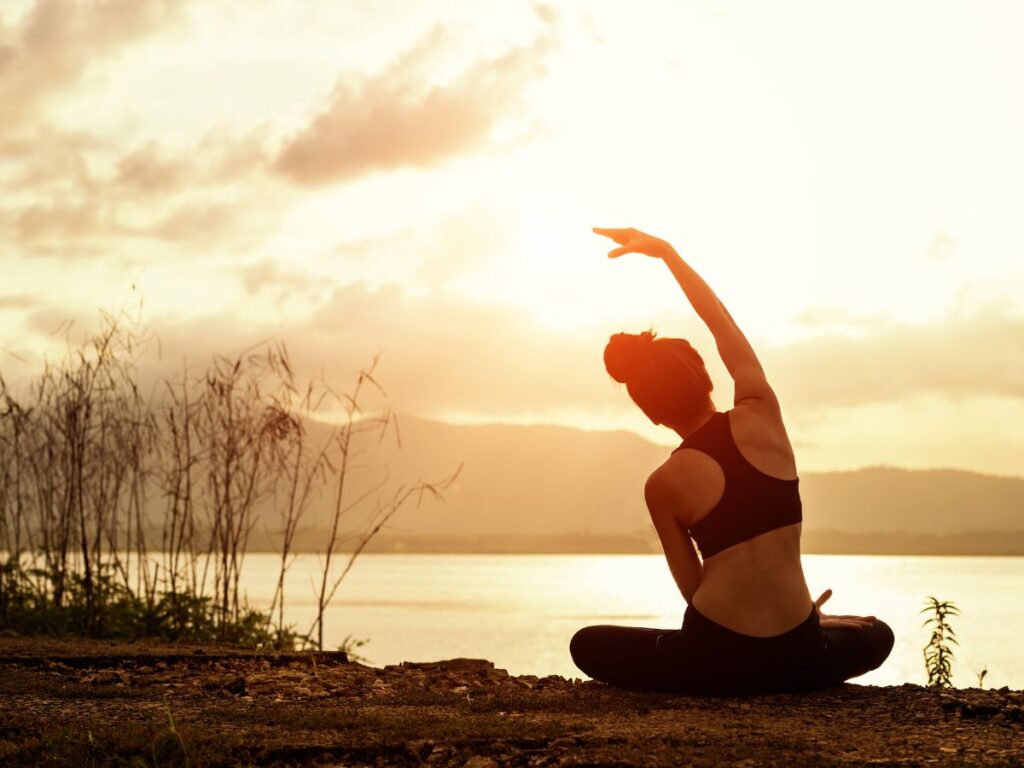
Tips for Getting Started
Setting up a Comfortable Space:
Create a dedicated space in your home where you can practice yoga comfortably and without distractions. Clear the area of clutter, choose a quiet and well-ventilated room, and lay down a yoga mat or a soft surface to provide support for your practice. Add elements that inspire relaxation and focus, such as candles, incense, or soothing music, to enhance your yoga experience.
Finding the Right Instructor or Resources:
Seek out reputable yoga instructors or online resources that align with your goals and preferences. Consider factors such as teaching style, experience, and expertise in different yoga styles or traditions. Attend classes at local studios, explore online platforms, or invest in instructional books, DVDs, or apps to access a variety of yoga practices and guidance tailored to your needs.
Setting Realistic Goals:
Begin your yoga journey with realistic and achievable goals that reflect your current fitness level, lifestyle, and aspirations. Start with manageable commitments, such as practicing for a few minutes each day or attending one or two classes per week, and gradually increase the duration and intensity of your practice as you progress. Focus on building consistency, cultivating mindfulness, and listening to your body’s needs, rather than striving for perfection or comparing yourself to others.
By creating a comfortable space, seeking out reliable guidance, and setting realistic goals, you can embark on your yoga journey with confidence and enthusiasm, laying the foundation for a fulfilling and sustainable practice.
Overcoming Challenges
Dealing with Stiffness and Inflexibility:
Warm-Up Properly:
Start your yoga practice with gentle warm-up exercises to gradually loosen tight muscles and improve blood circulation. Incorporate dynamic movements like shoulder rolls, neck stretches, and gentle twists to prepare the body for deeper stretches.
Practice Gentle Stretching:
Begin with gentle stretching exercises that target areas of stiffness and inflexibility. Focus on areas commonly affected by tightness, such as the hips, hamstrings, shoulders, and lower back. Hold each stretch for several breaths, gradually deepening the stretch as you relax into it.
Use Props for Support:
Utilize yoga props such as blocks, straps, blankets, or bolsters to modify poses and provide additional support during stretches. Props can help you maintain proper alignment, reduce strain on tight muscles, and gradually increase flexibility over time.
Breathe Mindfully:
Pay attention to your breath and use it to facilitate relaxation and release tension in tight areas. Practice deep, slow breathing throughout your yoga practice, focusing on inhaling deeply into areas of tension and exhaling to release any resistance or tightness.
Be Patient and Persistent:
Accept where you are in your practice without judgment and understand that flexibility takes time to develop. Approach your practice with patience and persistence, trusting that consistent effort and gentle stretching will gradually improve your flexibility over time.

Managing Distractions and Maintaining Focus:
Create a Sacred Space:
Designate a quiet, clutter-free space for your yoga practice where you can minimize distractions and create a sense of tranquility. Eliminate noise, turn off electronic devices, and set aside any external concerns or responsibilities to fully immerse yourself in your practice.
Set Intentions:
Begin each yoga session by setting a clear intention or focus for your practice. Whether it’s cultivating mindfulness, finding inner peace, or releasing tension, establishing a purposeful intention can help guide your practice and keep you grounded amidst distractions.
Stay Present:
Practice mindfulness by bringing your awareness to the present moment and tuning into the sensations of your body, breath, and movement. Focus on the physical sensations of each pose, the rhythm of your breath, and the alignment of your body, allowing distractions to fade into the background.
Use Drishti (Gaze):
Use a focal point, or drishti, to help maintain concentration and balance during yoga poses. Choose a fixed point in front of you to gaze at steadily, allowing your gaze to remain soft and focused as you move through your practice.
Cultivate Inner Awareness:
Cultivate inner awareness by observing your thoughts and emotions without attachment or judgment. Notice when distractions arise and gently redirect your focus back to the present moment, anchoring yourself in the sensations of your breath and body.
By incorporating these strategies into your yoga practice, you can effectively deal with stiffness and inflexibility while managing distractions and maintaining focus, allowing you to experience the full benefits of your practice with presence and mindfulness.
Tracking Progress
Importance of Monitoring Your Journey:
Awareness of Progress:
Monitoring your yoga journey allows you to track your progress over time, helping you recognize improvements in flexibility, strength, balance, and overall well-being. By staying aware of your advancements, you can celebrate achievements and stay motivated to continue your practice.
Identification of Areas for Growth:
Monitoring enables you to identify areas where you may need to focus more attention or make adjustments in your practice. Whether it’s improving flexibility in certain muscle groups, refining alignment in specific poses, or enhancing breath control, tracking your journey helps you pinpoint areas for growth and development.
Mindfulness and Reflection:
Regularly monitoring your yoga practice encourages mindfulness and self-reflection, as you become more attuned to your body, breath, and mind. It provides an opportunity to observe patterns, habits, and challenges that arise during practice, fostering a deeper understanding of yourself and your practice.
Motivation and Accountability:
Monitoring your progress can serve as a source of motivation and accountability, inspiring you to stay committed to your practice and strive for continuous improvement. Seeing tangible evidence of your efforts and achievements can boost confidence, enhance self-discipline, and reinforce your commitment to personal growth.
Tools and Techniques for Tracking Progress:
Yoga Journaling:
Keep a yoga journal to record your practice sessions, including details such as the duration of practice, specific poses or sequences practiced, and any insights or observations that arise during practice. Reflect on your experiences, noting progress, challenges, and areas for growth.
Photographic Evidence:
Take photographs or videos of your yoga practice periodically to visually track your progress over time. Compare images or videos from different points in your journey to observe changes in posture, alignment, and overall physical appearance.
Progress Checklists:
Create checklists or charts to track specific goals or milestones in your yoga practice. Break down larger goals into smaller, achievable steps, and mark your progress as you work toward each objective. This visual representation can help you stay focused and motivated as you strive to accomplish your goals.
Measurement Tools:
Use measurement tools such as flexibility tests, strength assessments, or balance challenges to quantify your progress in specific areas of your practice. Keep track of measurements or scores over time to monitor improvements and identify areas for further development.
Technology and Apps:
Utilize technology and smartphone apps designed for yoga tracking and progress monitoring. Many apps offer features such as workout logs, progress charts, guided practices, and reminders to help you stay organized and motivated in your yoga journey.
By monitoring your yoga journey and utilizing tools and techniques for tracking progress, you can cultivate greater awareness, motivation, and accountability in your practice, ultimately leading to a deeper and more fulfilling yoga experience.

Staying Motivated
Finding Inspiration in Your Practice:
Exploring Different Styles:
Experiment with various styles of yoga to find what resonates with you and ignites your passion for practice. Whether it’s a vigorous vinyasa flow, a grounding yin yoga session, or a meditative Kundalini practice, exploring different styles can provide fresh inspiration and keep your practice dynamic and engaging.
Setting Intentions:
Begin each yoga session with a clear intention or focus that inspires and motivates you. Whether it’s cultivating gratitude, finding inner peace, or embodying strength and resilience, setting intentions can infuse your practice with purpose and meaning, guiding you toward greater connection and fulfillment on and off the mat.
Exploring New Poses:
Challenge yourself to explore new yoga poses or sequences that stretch your boundaries and expand your practice. Embrace a spirit of curiosity and adventure as you try poses you’ve never attempted before, trusting in your body’s innate wisdom and capacity for growth.
Connecting with Community:
Seek inspiration from the yoga community by attending classes, workshops, or retreats, and connecting with fellow practitioners who share your passion for yoga. Surrounding yourself with like-minded individuals can provide support, encouragement, and inspiration as you journey along the path of yoga together.
Drawing from Nature:
Find inspiration in the beauty and wisdom of nature by practicing yoga outdoors whenever possible. Take your mat to a nearby park, beach, or forest, and immerse yourself in the sights, sounds, and sensations of the natural world. Allow the elements to invigorate your practice and deepen your connection to the earth and sky.
Celebrating Small Victories:
Acknowledge Progress:
Take time to acknowledge and celebrate small victories and milestones in your yoga practice, such as mastering a challenging pose, holding a balance for an extra breath, or experiencing a deeper sense of relaxation in savasana. Recognize the effort and dedication that went into achieving these moments of success.
Express Gratitude:
Cultivate gratitude for your body’s resilience, strength, and capacity for growth as you celebrate your achievements in yoga. Express gratitude for the teachers, mentors, and fellow practitioners who have supported and inspired you along the way, recognizing the interconnectedness of your yoga journey.
Reflect on Growth:
Reflect on how far you’ve come in your yoga practice and how much you’ve grown, both physically and mentally. Celebrate the progress you’ve made, however small or incremental, and honor the commitment and perseverance it took to reach this point.
Share Your Success:
Share your success and accomplishments with others, whether it’s with your yoga teacher, friends, or family members. Celebrate your victories openly and authentically, inviting others to join in your joy and celebration.
Reward Yourself:
Treat yourself to a special reward or indulgence as a way of celebrating your achievements in yoga. Whether it’s a relaxing massage, a nourishing meal, or a new yoga outfit, choose something that brings you joy and reinforces your commitment to self-care and self-love.
By finding inspiration in your practice and celebrating small victories along the way, you can cultivate a deeper sense of purpose, fulfillment, and joy in your yoga journey, empowering you to continue evolving and expanding on and off the mat.

Incorporating Yoga into Daily Life
Making Yoga a Habit:
Set a Schedule:
Establish a regular schedule for your yoga practice by designating specific times and days for your sessions. Consistency is key to forming a habit, so aim to practice yoga at the same time each day or on certain days of the week to make it a regular part of your routine.
Start Small:
Begin with manageable goals that are easy to achieve, such as practicing yoga for just a few minutes each day. Gradually increase the duration and intensity of your practice as you build consistency and confidence over time.
Create Accountability:
Hold yourself accountable to your yoga practice by sharing your goals with friends, family, or a yoga buddy who can offer support and encouragement. Joining a yoga class or online community can also provide accountability and motivation to stick to your practice.
Make it Enjoyable:
Choose yoga practices and styles that you enjoy and look forward to, whether it’s a calming restorative class, an energizing vinyasa flow, or a playful acro-yoga session. Find joy and pleasure in your practice to make it a sustainable and fulfilling habit.
Integrate Yoga into Your Routine:
Integrate yoga into your daily routine by incorporating it into activities you already do. For example, practice yoga first thing in the morning before starting your day, during your lunch break at work, or in the evening before bedtime. Find times that work best for you and make yoga a non-negotiable part of your routine.
Finding Opportunities for Mini-Sessions Throughout the Day:
Desk Yoga:
Take short breaks throughout the day to practice desk yoga at work or at home. Incorporate simple stretches, seated twists, and deep breathing exercises to release tension, improve posture, and refresh your mind and body.
Micro-Meditations:
Integrate mini yoga sessions into your daily activities by practicing mindfulness and meditation techniques whenever you have a few spare moments. Take a few deep breaths, close your eyes, and focus on your breath, body sensations, or surroundings to cultivate presence and inner calm.
Yoga Snacks:
Treat yourself to “yoga snacks” throughout the day by taking short breaks to practice a few yoga poses or stretches. Choose poses that target areas of tension or fatigue, such as forward folds, hip openers, or chest openers, to rejuvenate your body and mind.
Mindful Movement:
Infuse mindfulness into your everyday movements by practicing conscious breathing and body awareness while performing tasks such as walking, standing, or sitting. Focus on aligning your breath with your movements to cultivate mindfulness and presence in the present moment.
Bedtime Yoga:
Wind down at the end of the day with a mini-session of bedtime yoga to relax and prepare your body for sleep. Practice gentle stretches, restorative poses, and calming breathing exercises to release tension, quiet the mind, and promote deep relaxation before bedtime.
By incorporating these strategies into your daily routine, you can make yoga a habit and find opportunities for mini-sessions throughout the day, allowing you to experience the benefits of yoga in your life, both on and off the mat.

Yoga for Mind and Spirit
Connecting with Your Inner Self:
Cultivate Awareness:
Begin by cultivating awareness of your thoughts, emotions, and sensations as you engage in your yoga practice. Notice any mental chatter, physical tension, or emotional fluctuations that arise, and observe them with curiosity and compassion.
Listen to Your Body:
Tune into the messages of your body and honor its wisdom by practicing yoga with attentiveness and receptivity. Pay attention to physical sensations, such as tightness, discomfort, or ease, and adjust your practice accordingly to support your body’s needs in the present moment.
Quiet the Mind:
Quiet the mind chatter and cultivate inner stillness by focusing on the present moment during your yoga practice. Let go of distractions, worries, and expectations, and immerse yourself fully in the experience of breath, movement, and sensation.
Explore Self-Inquiry:
Use yoga as an opportunity for self-inquiry and exploration by asking yourself meaningful questions and reflecting on your experiences both on and off the mat. Consider questions such as “What am I feeling in this pose?” or “What thoughts arise when I encounter resistance?” to deepen your understanding of yourself and your practice.
Using Yoga as a Tool for Self-Reflection and Mindfulness:
Body Scan Meditation:
Practice body scan meditation during your yoga practice to cultivate mindfulness and self-awareness. Slowly scan your body from head to toe, noticing any areas of tension, discomfort, or relaxation, and bringing gentle awareness to each sensation without judgment.
Breath Awareness:
Use the breath as an anchor for mindfulness by focusing on the sensations of inhalation and exhalation throughout your yoga practice. Notice the rhythm, depth, and quality of your breath, and use it as a guide to cultivate presence and inner calm.
Integrate Mindful Movement:
Approach yoga as a form of mindful movement by moving with intention, awareness, and grace. Pay attention to the transitions between poses, the alignment of your body, and the sensations that arise with each movement, allowing your practice to become a moving meditation.
Journaling:
Use journaling as a tool for self-reflection and contemplation after your yoga practice. Take a few moments to write down any insights, observations, or emotions that arose during your practice, allowing yourself to explore and process your experiences on a deeper level.
Practice Gratitude:
Cultivate an attitude of gratitude by reflecting on the blessings and opportunities that yoga brings into your life. Take time to appreciate the gift of movement, breath, and self-discovery that yoga offers, and express gratitude for the opportunity to connect with your inner self and cultivate mindfulness through your practice.
By connecting with your inner self and using yoga as a tool for self-reflection and mindfulness, you can deepen your understanding of yourself, enhance your presence, and cultivate a deeper sense of peace and well-being in your life.

The Mind-Body Connection
Understanding the Holistic Benefits of Yoga:
Physical Health:
Yoga promotes physical well-being by improving flexibility, strength, balance, and cardiovascular health. Through the practice of asanas (poses) and pranayama (breathing exercises), yoga supports overall physical fitness and vitality.
Mental Clarity:
Yoga cultivates mental clarity and focus by encouraging mindfulness and present-moment awareness. The combination of movement, breathwork, and meditation helps quiet the mind, reduce mental chatter, and enhance cognitive function.
Emotional Balance:
Yoga fosters emotional balance by providing a safe space for self-expression, self-exploration, and self-acceptance. The practice of yoga allows individuals to connect with and process their emotions in a supportive environment, promoting emotional resilience and well-being.
Stress Reduction:
Yoga is renowned for its ability to reduce stress and promote relaxation. By activating the parasympathetic nervous system and lowering levels of cortisol (the stress hormone), yoga helps alleviate tension, anxiety, and overwhelm, fostering a sense of calmness and inner peace.
Improved Sleep:
Regular yoga practice has been shown to improve sleep quality and duration. By promoting relaxation, reducing stress, and calming the nervous system, yoga helps individuals fall asleep faster, stay asleep longer, and wake up feeling more refreshed and rejuvenated.
How Yoga Impacts Mental Health and Emotional Well-being:
Stress Management:
Yoga serves as a powerful tool for stress management by promoting relaxation, reducing physiological arousal, and enhancing coping mechanisms. Mindful movement, breathwork, and meditation practices help individuals navigate stressors more effectively and build resilience in the face of adversity.
Anxiety Reduction:
Yoga is effective in reducing symptoms of anxiety by promoting relaxation, soothing the nervous system, and fostering a sense of calmness and groundedness. Through breath-centered practices and grounding poses, yoga helps individuals manage anxiety symptoms and cultivate inner peace.
Depression Relief:
Yoga has been shown to alleviate symptoms of depression by increasing levels of neurotransmitters such as serotonin and dopamine, which are associated with mood regulation and emotional well-being. The mindful movement and meditative aspects of yoga offer individuals a holistic approach to managing depression and enhancing mood.
Emotional Regulation:
Yoga provides a supportive framework for emotional regulation by encouraging individuals to observe and accept their emotions without judgment. Through the practice of mindfulness and self-compassion, yoga helps individuals develop healthier coping strategies and navigate emotional challenges with greater ease and resilience.
Self-awareness and Self-acceptance:
Yoga fosters self-awareness and self-acceptance by encouraging individuals to connect with their inner selves and embrace their inherent worthiness. Through practices such as self-reflection, self-inquiry, and self-compassion, yoga helps individuals cultivate a deeper understanding of themselves and foster a sense of wholeness and authenticity.
By recognizing the holistic benefits of yoga and understanding its profound impact on mental health and emotional well-being, individuals can harness the transformative power of yoga to enhance their overall quality of life and cultivate a greater sense of balance, harmony, and inner peace.
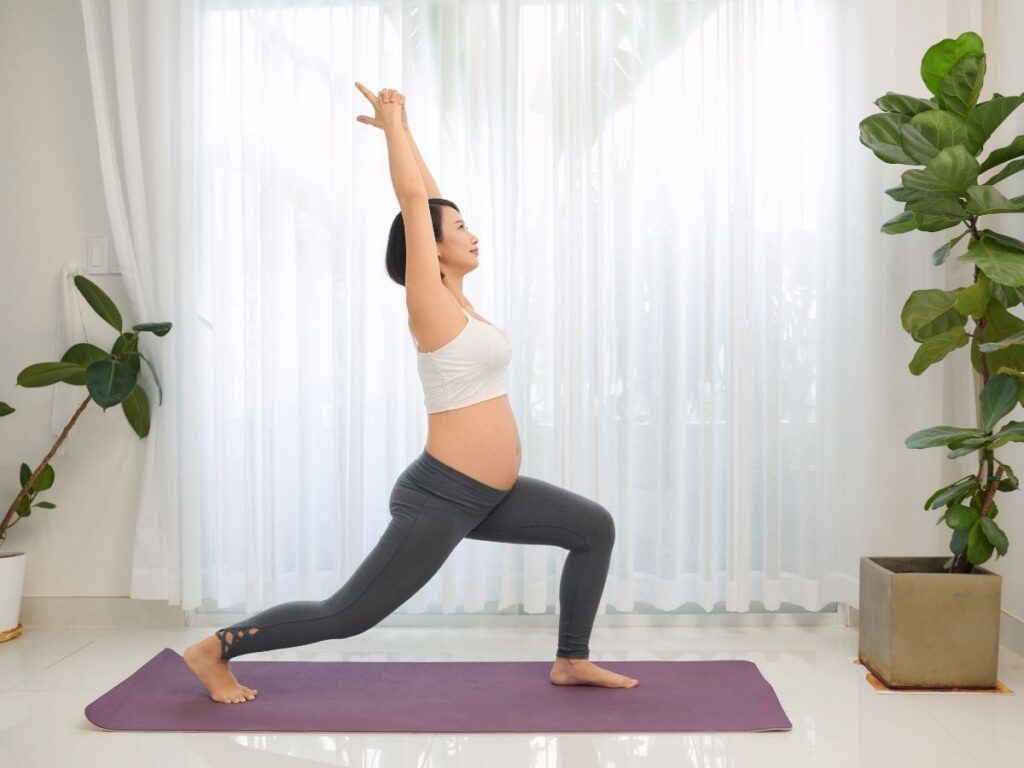
Beyond the Physical: Yoga Philosophy
Exploring the philosophical principles behind yoga unveils its rich spiritual heritage and timeless wisdom, while applying these principles to daily life offers profound guidance for navigating the complexities of modern existence:
Exploring the Philosophical Principles behind Yoga:
The Eight Limbs of Yoga:
Yoga philosophy is rooted in the teachings of Patanjali’s Yoga Sutras, which outline the Eight Limbs of Yoga as a comprehensive path to spiritual realization. These limbs include ethical guidelines (yamas and niyamas), physical postures (asanas), breath control (pranayama), sensory withdrawal (pratyahara), concentration (dharana), meditation (dhyana), and spiritual absorption (samadhi).
Yamas and Niyamas:
The yamas and niyamas represent moral and ethical principles that guide one’s conduct and character both on and off the mat. The yamas include principles such as non-violence (ahimsa), truthfulness (satya), and non-attachment (aparigraha), while the niyamas encompass self-discipline (tapas), self-study (svadhyaya), and surrender to a higher power (ishvara pranidhana).
The Concept of Dharma:
Dharma refers to one’s duty or righteous path in life, in alignment with cosmic order and universal principles. By living in accordance with dharma, individuals uphold ethical values, fulfill their responsibilities, and contribute to the greater good of society.
Karma and Reincarnation:
Yoga philosophy embraces the concepts of karma (action) and reincarnation (samsara), which posit that every action has consequences and that individuals are bound by the cycle of birth and rebirth until they attain spiritual liberation (moksha).
Union and Oneness:
At its core, yoga teaches the principle of union or oneness (yoga), which encompasses the interconnectedness of all beings and the realization of the divine essence within oneself and others. Yoga is not just about physical postures but about uniting body, mind, and spirit in harmony with the universe.
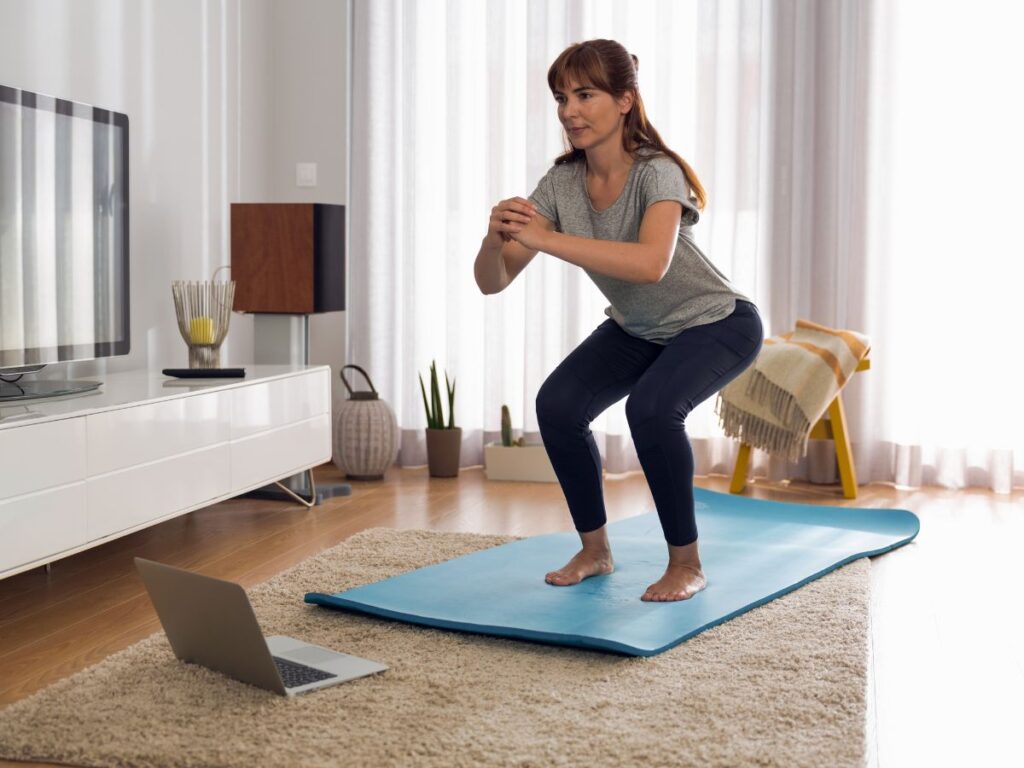
Applying Yogic Principles to Daily Life:
Cultivating Mindfulness:
Incorporate mindfulness practices into daily life by bringing awareness to the present moment and engaging fully in each activity with presence and intention. Whether it’s eating mindfully, walking mindfully, or conversing mindfully, cultivate awareness and attentiveness in every aspect of life.
Practicing Ahimsa (Non-Violence):
Extend the principle of non-violence beyond physical actions to encompass thoughts, words, and intentions. Practice compassion, kindness, and empathy towards oneself and others, fostering a culture of peace and harmony in all interactions.
Living with Intention:
Align your actions with your values and intentions, living with purpose and integrity in accordance with the principles of dharma. Reflect on your values, set meaningful goals, and make conscious choices that support your overall well-being and spiritual growth.
Cultivating Self-Discipline:
Develop self-discipline and self-mastery through consistent practice and effort, whether it’s in your yoga practice, work, or personal pursuits. Embrace challenges as opportunities for growth and strive for excellence with dedication and perseverance.
Embracing Impermanence:
Recognize the transient nature of life and cultivate an attitude of non-attachment (aparigraha) towards material possessions, outcomes, and relationships. Embrace change as a natural part of the human experience and find peace in the present moment, knowing that everything is impermanent.
By exploring the philosophical principles behind yoga and applying these teachings to daily life, individuals can cultivate greater self-awareness, inner peace, and spiritual fulfillment, living in alignment with their highest values and aspirations.
Yoga Transform Your Body Yoga Transform Your Body Yoga Transform Your Body Yoga Transform Your Body Yoga Transform Your Body Yoga Transform Your Body Yoga Transform Your Body Yoga Transform Your Body Yoga Transform Your Body Yoga Transform Your Body


